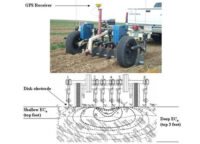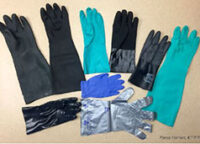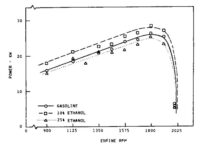- 09, 25, 2015
- Comments Off on Nitrogen and Irrigation Management – 0.514
- By admin
Nitrogen and Irrigation Management – 0.514
Print this fact sheet by T.A. Bauder, R.M. Waskom, and A. Andales* (10/14) Quick Facts… Good nitrogen and irrigation management practices increase yields while reducing fertilizer and irrigation costs. Best management practices for nitrogen and irrigation management preserve water quality. Good nitrogen and irrigation management practices can reduce the probability of nitrate leaching into groundwater […]
Take a Tour- 09, 25, 2015
- Comments Off on Legume Seed Inoculants – 0.305
- By admin
Legume Seed Inoculants – 0.305
Print this fact sheet by B. Erker and M.A. Brick * (9/14) Revised by H. Schwartz** Quick Facts… Legumes convert atmospheric nitrogen to usable ammonia nitrogen for the plant. Inoculation is the process of introducing commercially prepared rhizobia bacteria into the soil. Each legume species requires a specific species of rhizobia to form nodules and […]
Take a Tour- 09, 25, 2015
- Comments Off on Grain Protein Content and N Needs – 0.555
- By admin
Grain Protein Content and N Needs – 0.555
Print this fact sheet by R.J. Goos, D.G. Westfall and A.E. Ludwick * (12/14) Quick Facts… Fields consistently producing grain with protein contents less than 11.1 percent very likely have nitrogen deficiencies that limit yields and protein content. These fields should receive more nitrogen fertilizer than is currently being applied. Fields producing grain with protein […]
Take a Tour- 09, 25, 2015
- Comments Off on Field EC Mapping: A New Tool to Make Better Decisions – 0.568
- By admin
Field EC Mapping: A New Tool to Make Better Decisions – 0.568
Print this fact sheet by H. J. Farahani, R. Khosla and G.W. Buchleiter* (5/11) Quick Facts… Mapping soil composition across the field is easily done using measurements of soil electrical conductivity (ECa). A soil ECa map is important because it identifies areas in a field that have different soil compositions which may benefit from different […]
Take a Tour- 09, 24, 2015
- Comments Off on Agricultural Respiratory Protective Equipment – 5.020
- By admin
Agricultural Respiratory Protective Equipment – 5.020
Print this fact sheet by M. Legault, P.D. Ayers and S.K. McDonald1 (3/07) Quick Facts… Read the label or material safety data sheet (MSDS) for the type of respiratory protection required. Ensure proper fit. Store respirators in a sealable, nonporous bag and in an area not exposed to chemicals or other agents that may be absorbed by […]
Take a Tour- 09, 24, 2015
- Comments Off on Agricultural Pesticide Protective Equipment – 5.021
- By admin
Agricultural Pesticide Protective Equipment – 5.021
Print this fact sheet by P. Hansen and T. Walker* (12/15) Quick Facts… Personal Protective Equipment (PPE) includes clothing and devices that protect the body from contact with chemicals such as pesticides. Three factors affect a PPE’s chemical resistance: the chemical properties of the pesticide, the exposure time, and the exposure situation. Any plastic or […]
Take a Tour- 09, 24, 2015
- Comments Off on Sprayer Calibration Fundamentals – 5.003
- By admin
Sprayer Calibration Fundamentals – 5.003
Print this fact sheet by P.D. Ayers and B. Bosley 1 (1/05) Quick Facts… Inaccurate pesticide application rates, spray patterns and droplet size can lead to the movement of pesticides from the targeted area and reduce pesticide effectiveness. The first step in sprayer calibration is to determine the correct nozzle type and size. Nozzle material […]
Take a Tour- 09, 24, 2015
- Comments Off on Alcohol for Motor Fuels – 5.010
- By admin
Alcohol for Motor Fuels – 5.010
Print this fact sheet by J.L. Smith and J.P. Workman * (11/14) Revised by A. Drenth and P. Cabot** Quick Facts… Alcohols burn more completely then petroleumbased fuels, thus increasing combustion efficiency. Advantages of mixing alcohol with gasoline are that alcohol tends to increase the octane rating and reduce carbon monoxide and other tailpipe emissions. […]
Take a Tour- 09, 24, 2015
- Comments Off on Partial Budget Form – 3.761
- By admin
Partial Budget Form – 3.761
Print this fact sheet by P.H. Gutierrez and N.L. Dalsted* (11/13) Quick Facts… Many changes in a farm or ranch do not require reorganization. Use partial budgeting to project changes in: expanding an enterprise, create alternative enterprises, develop different production practices, buy new machines, hire a custom operation, or make capital improvements. Partial budgeting is […]
Take a Tour- 09, 24, 2015
- Comments Off on The Optimal Cow Size for Intermountain Cow-Calf Operations – 3.767
- By admin
The Optimal Cow Size for Intermountain Cow-Calf Operations – 3.767
Print this fact sheet by Jesse Russell and Dillon Feuz* (8/15) Quick Facts… The competitive nature of the cattle industry in the arid West means that cattle producers have to continually monitor their herds for efficiency. Calf revenue generally represents 75% to 90% of operating revenue making it imperative to raise calves that maximize revenues […]
Take a Tour






